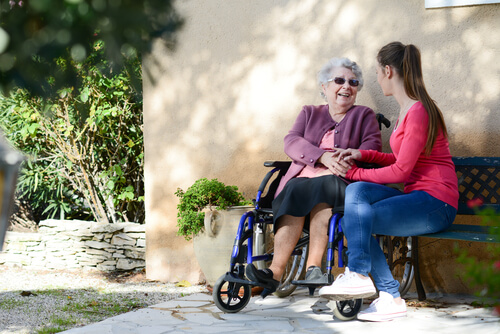
5 Tips for Visiting a Relative with Dementia in Hospice
Research shows that 44.7 percent of hospice patients are diagnosed with dementia, and the condition can be painful for visitors. You might worry about your relative failing to recognise you, becoming agitated or getting upset when it’s time for you to go home.
However, this doesn’t mean that you need to avoid visits altogether. By setting realistic expectations, and getting prepared for and planning for different situations, you can ensure that your stay runs as smoothly as possible.
Keep reading for five tips on visiting a friend or relative with dementia.
1. Keep Your Expectations Realistic
Visiting a relative with dementia can be particularly difficult because the condition can worsen relatively quickly. If your relative had no trouble recognising you on your last visit but struggles to remember who you are a few weeks later, you might feel distressed and worried.
Dementia is customarily described using seven different stages, where stage two is a very mild cognitive decline, like forgetting where things are, and stage seven is a very severe cognitive decline, meaning that the person will need help with almost all everyday tasks.
Keeping these stages in mind can help you to set realistic expectations ahead of your visits. Instead of hoping that your relative will have improved, you can mentally prepare for the possibility that they won’t be as lucid as the last time you saw them.
Planning a range of activities that vary in complexity is an excellent way to feel prepared, and the next few points will give you some helpful ideas.
2. Bring a Photo Album to Prompt Memories
Photographs are shown to be an effective way to trigger memories in people living with dementia, so putting together a photo album is an excellent way to prepare for your visit.
Since sufferers often find it easier to remember events that happened earlier in their lives, it’s a good idea to try to find pictures of things they might remember from their childhood, teenage years or early adulthood. This could include photos of their first car, their old home or their workplace. If you have access to old photo albums, you might add pictures of family members and pets.
Write a short description of the back of each photograph, as some patients might look for this if they don’t immediately recognise what’s shown in each picture. You could also add a few questions to help prompt conversation, like, “Who taught you to drive?” or “Did you enjoy your first job?”
Make sure photos are large enough for your relative to see clearly, and store them in a folder or album for secure browsing.
3. Pack Some Simple Games and Activities
Meaningful activities offer a vast range of benefits to people living with dementia, from reducing stress and anxiety to improving cognitive health. Having planned activities can also help take some of the pressure off you as a visitor, as you won’t feel like you need to be constantly chatting.
The kind of game or activity you decide to take will depend on your relative’s interests, abilities and level of cognitive decline.
If your relative enjoys puzzles, you could print out some simple crosswords, word searches or sudoku. Jigsaw puzzles are another excellent option, and puzzles designed for small children often work well because of the large pieces and bright colours.
If your relative would enjoy something a little more active, you could pack a ball or bean bag for a simple game of catch, bring a balloon to hit back and forth using badminton rackets or put on some music and dance together. If your relative isn’t mobile enough to dance, a sing-along is a fun group activity that also boosts brain activity.
It’s best to prepare a range of potential activities and be prepared for the possibility that your relative isn’t interested.
4. Go Out for a Walk or Meal If Possible
Taking your relative outside for a short walk or meal can be a helpful refresher for everyone, as long as it’s safe.
You don’t want to plan anything dramatic — even a quick stroll around the grounds of the hospice or a cup of tea at a local cafe can provide a welcome change of environment. Spending time close to nature is proven to improve quality of life for sufferers, so consider a local nature area or garden centre.
If you do decide to take your relative out, be sure to communicate clearly with hospice staff and agree on a set time for the trip. This helps your relative to stay in a consistent routine rather than being thrown by missing a mealtime or activity.
5. Time Your Departure to Coincide with Another Activity
When it comes to saying goodbye, it’s possible that your relative will become upset and agitated. To make things easier for everyone, try to time your departure to coincide with another activity, like a meal or group session.
This makes it easier for you to leave without your relative asking to be taken home or becoming confused about why they are being left behind. Avoid spending too long on saying goodbye, and try not to feel guilty — your relative is in a safe place where they can receive all the care they need.
Visiting a relative with dementia in hospice can feel daunting, but a little preparation makes things much more manageable. Use the advice above to cut down on stress when planning your next visit.





